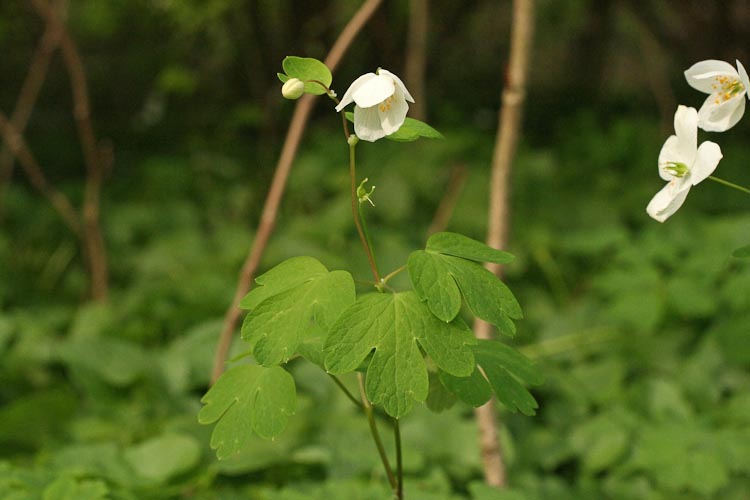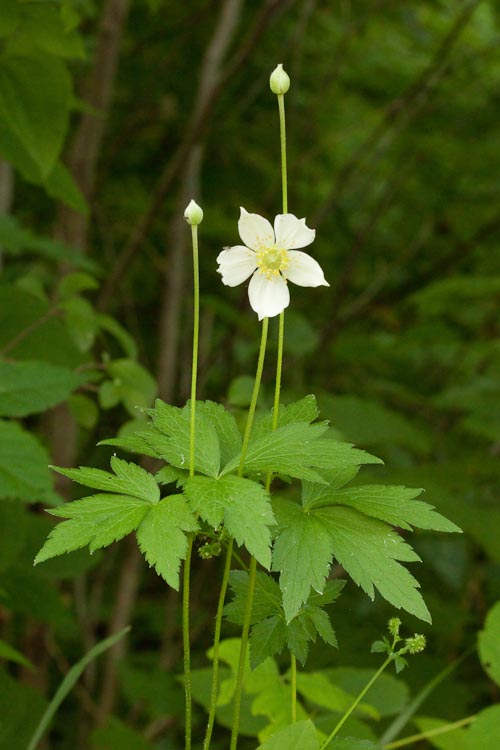Circle Bakote
Searched by
MOHAMMED OBAIDULLAH ALVI
Journalist, Historian, Blogger and Anthropologist
(Ph: +92 331 5446020, E Mail: alvibirotvi@gmail.com)
**************************************
RANUNCULACEAE
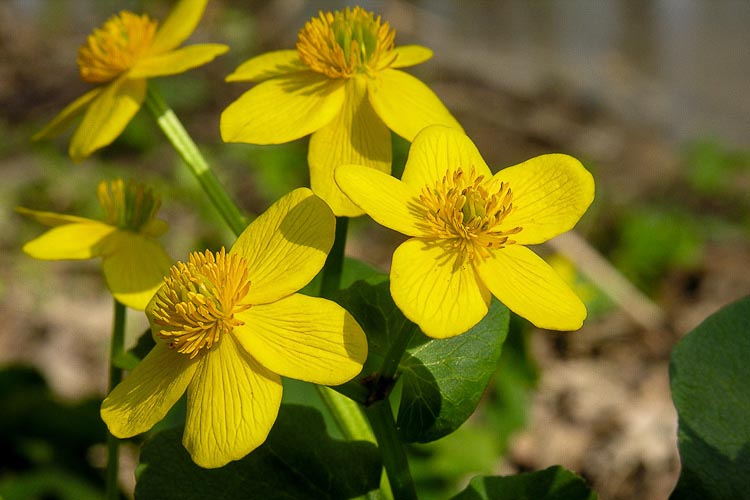 Cowslip, or marsh-marigold (Caltha palustris) is a native wetland herb.
The buttercup family consists mainly of annual or perennial herbs, or, rarely, woody plants. The leaves are usually alternately arranged and palmately compound, and
lack stipules. The flowers are usually bisexual, radially symmetric
(actinomorphic), arranged in solitary fashion, or in racemes or cymes. A
buttercup family is typically elongate. The perianth consists of
separate sepals and petals that are often not differentiated from one
another, and petals are often lacking. The androecium is typically of
numerous stamens, spirally inserted on the receptacle. The gynoecium is
typically apocarpous, composed of many spirally inserted carpels. The
fruit is a follicle, achene, berry, or a capsule (rarely).
Cowslip, or marsh-marigold (Caltha palustris) is a native wetland herb.
The buttercup family consists mainly of annual or perennial herbs, or, rarely, woody plants. The leaves are usually alternately arranged and palmately compound, and
lack stipules. The flowers are usually bisexual, radially symmetric
(actinomorphic), arranged in solitary fashion, or in racemes or cymes. A
buttercup family is typically elongate. The perianth consists of
separate sepals and petals that are often not differentiated from one
another, and petals are often lacking. The androecium is typically of
numerous stamens, spirally inserted on the receptacle. The gynoecium is
typically apocarpous, composed of many spirally inserted carpels. The
fruit is a follicle, achene, berry, or a capsule (rarely).
The buttercup family exemplifies primitiveness among the flowering plants, with most of its members displaying the “FENSH” flower structure.

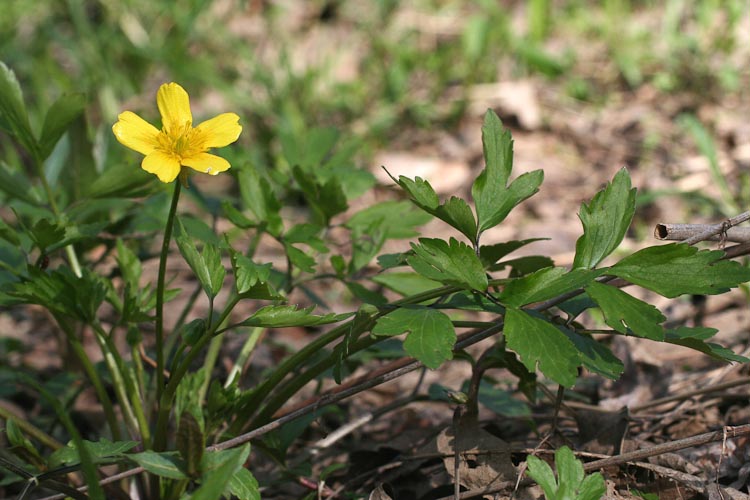 Buttercups are often called “crowfoot” because of their palmate leaves.
Buttercups are often called “crowfoot” because of their palmate leaves.
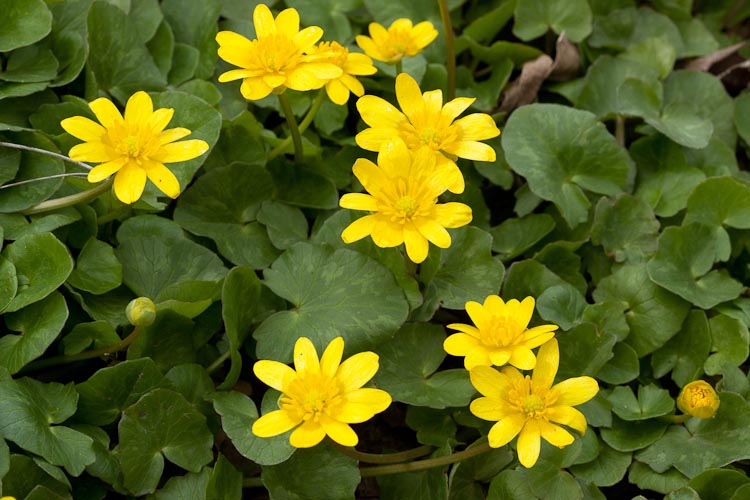
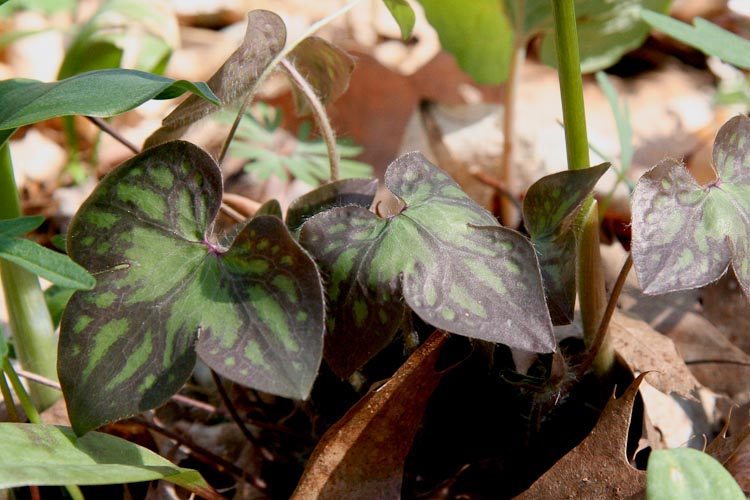
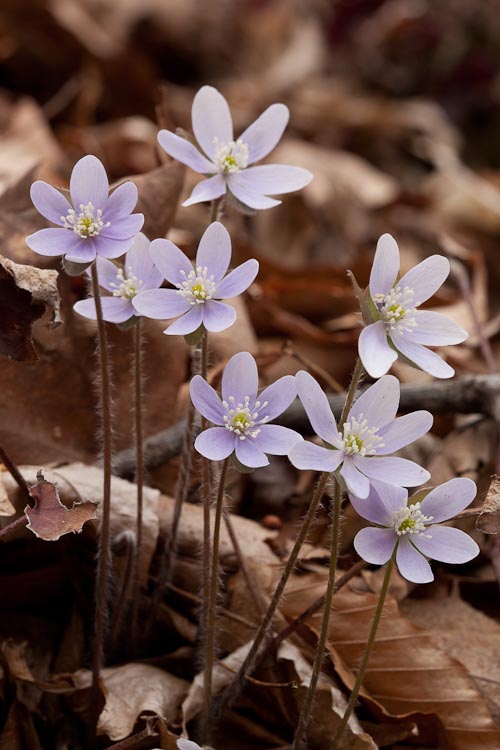
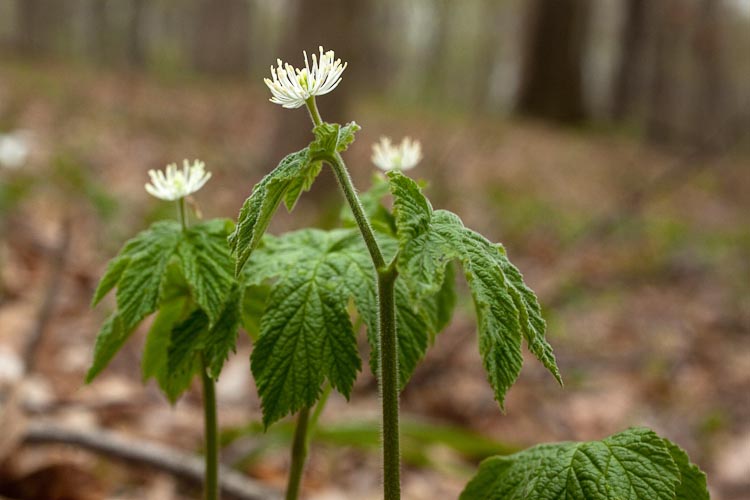
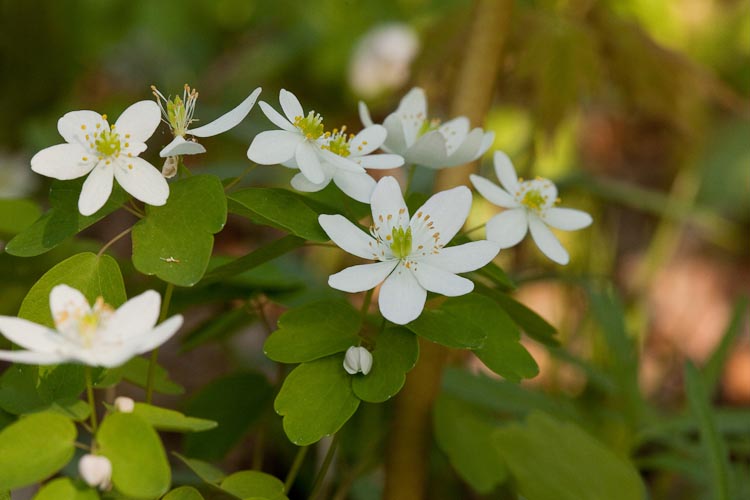 Rue-anomone is a forest wildflower with whorled palmately compound leaves.
Rue-anomone is a forest wildflower with whorled palmately compound leaves.
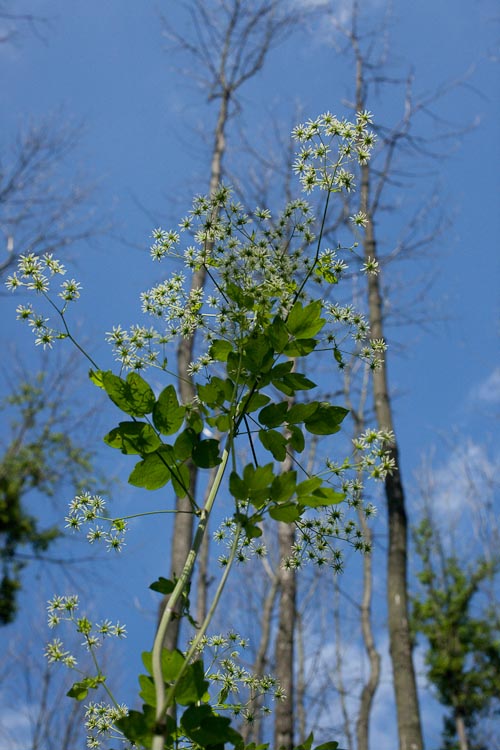
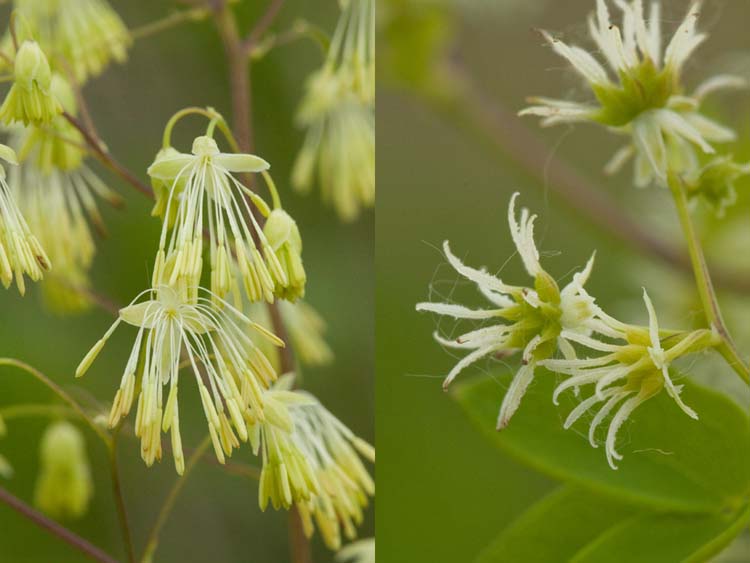
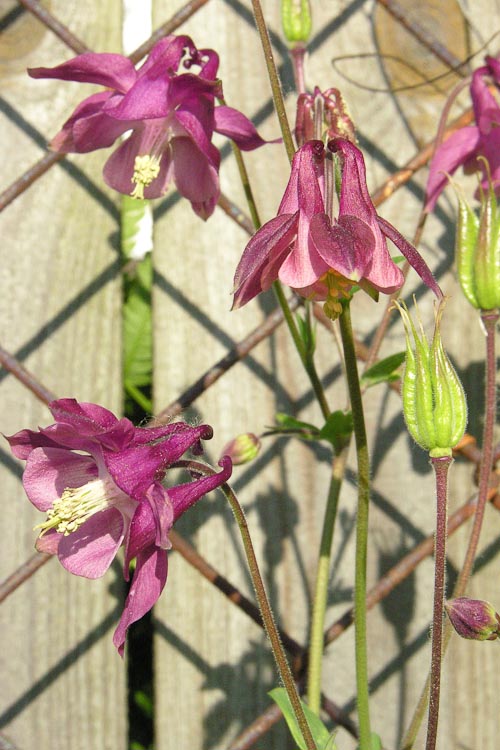
**************************************
These plants were grown by a plant enthusiast and you will not find any wild plants of hydrangea over there. There are two variants available there. The tall one which is common one. The dwarf one is perhaps imported one. Clematis, queen of flowering vine. This is true wild clematis species in Circle Bakote, Galyat & Murree Hills and other Galiyat region native to hilly areas. This one seems to be clematis Armanda i guess. Fragrant large flowers in clusters. Chrysanthemum leucanthemum daisy. Another wild flower of Circle Bakote, Galyat & Murree Hills is full of these honeysuckle shrubs. I thought they might be lonicera japonica but it is a climber not a small tree. So it is some lonicera shrub or small tree with mildly fragrant flowers. The yellow iris flowers. They are not wild but grown in many home gardeners in the Circle Bakote, Galyat & Murree Hills. Lupin, another plant which likes cool climate. flowers are small and stalks are never as tall.
RANUNCULACEAE
(Buttercup Family)
 Cowslip, or marsh-marigold (Caltha palustris) is a native wetland herb.
Cowslip, or marsh-marigold (Caltha palustris) is a native wetland herb.The buttercup family exemplifies primitiveness among the flowering plants, with most of its members displaying the “FENSH” flower structure.
MOUSEOVER the IMAGE to see BUTTERCUP FRUITS (ACHENES)

Buttercup flowers have separate parts, including many stamens and carpels,
inserted spirally on an elongate receptacle.
inserted spirally on an elongate receptacle.
Because many of its members have palmately
compounds leaves that apparently reminded someone of a bird’s foot, the
Ranunculaceae is also called the “crowfoot family”
 Buttercups are often called “crowfoot” because of their palmate leaves.
Buttercups are often called “crowfoot” because of their palmate leaves.
There’s a lot of variability in the
buttercup family, with many of its members displaying some, but not all,
of the general family features outlines above. “Small flowered
crowfoot” is also called “kidney-leaved buttercup” because its basal
(lowermost) leaves are entire and kidney-shaped.
MOUSEOVER the IMAGE for a CLOSEUP of FLOWERS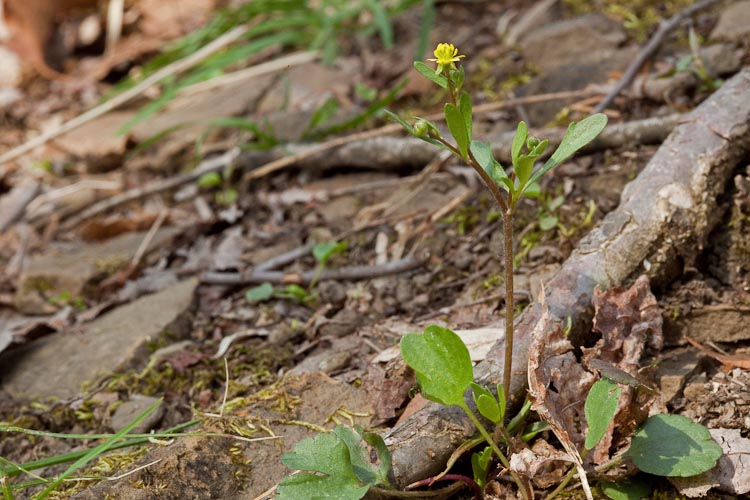

Small-flowered crowfoot is a common spring wildflower.
Look for the combination of small flowers and kidney-shaped lower leaves.
The completely very evil weed “lesser celandine” that is blanketing
shaded areas along streams across central Ohio is another example of a
non-crow-footed crowfoot.Look for the combination of small flowers and kidney-shaped lower leaves.

Lesser celandine is an invasive buttercup with kidney-shaped leaves.
Another member of the Ranunculaceae that has non-crow’s-foot shaped leaves that is named after a body part is “hepatica” (Hepatica species in older book; Anemone nobilis
in newer ones) also called “liver-leaf” because its leaves resemble a
human liver (creepy, eh?). This forest wildflower is easily recognized
by its leaves alone, which are present even during winter. According to an ancient idea called the
“Doctrine of Signatures,” many plants were put on earth to be of
medicinal benefit to us and the creator, in order to make it evident
what the benefits were, made the plant resemble the part of out body of
which the plant cured ailments. Hence, the liver-shaped leaves were
thought to cure liver ailments.

Hepatica leaves are liver-shaped, and according the the ancient
“Doctrine of Signatures,” could cure liver ailments!
“Doctrine of Signatures,” could cure liver ailments!
Hepatica is one
of our earliest-blooming wildflowers. The blossoms rise above the leafy
forest floor at a time when the plant’s leaves are inconspicuous.

Hepatica flowers appear in very early spring.
Speaking of medicinal members of the buttercup family, goldenseal is
one that, while not connected with the doctrine of signatures, has had a
long history of medical use. Purported to be a remedy for various
throat and skin conditions, goldenseal’s root has been relentlessly
over-collected by herb dealers and so is scarce across much of its
range.Goldenseal is an intriguing species. It is a clonal forest
understory herb with large palmately lobed leaves and flowers that are
conspicuous despite the fact they have no petals or sepals! The showy
pollinator-attracting part of the flower is the numerous stamens with
bright white somewhat expanded filaments.

Goldenseal is a forest wildflower that is threatened by over-collection by herb dealers.
Goldenseal fruits
are an aggregate of bright red berries. Here’s an action-packed video
of a harvestman (“daddy long-legs”) standing on a fruiting goldenseal
plant. Harvestman stands on goldendseal leaf. “Isopyrum” (Isopyrum biternatum)
is a forest wildflower that exemplifies that buttercup family, albeit in
a somewhat confusing manner. Sometimes called “false rue-anemone”
because of its striking resemblance to a plant called “rue-anemone,”
isopyrum has leaves that technically are alternately arranged, but
inasmuch as they are palmately compound but their leaves lack a
leafstalk, they appear to be whorled (like the leaves of rue-anemone).
MOUSEOVER the IMAGE to see ISOPYRUM FLOWER
Are you curious about “rue-anemone,” the
plant that isoppryum so resembles taht it is called “false
rue0anamone”? That plant, also common in in the midwest, was formerly
called Anemone thalictroides, (meaning literally “Anemone that looks like Thalictrum“) but recently has been recognized as being a genuine Thalictrum with the awkward name Thalictrum thalictroides (meaning a Thalictrum that looks like a Thalicrum!).
Rue-anenome leaves are genuinely whorled instead of being alternate
like those of isopyrum but, as mentioned above, the difference is
difficult to discern. A better way to differentiate the two lookalikes
is in their flowers, close up. See how different the developing fruits
are. Those of isopyrum are smooth and swollen at their base (and they
are follicles, each containing several seeds), while those of
rue-anemone are longitudinally ridged and spindle-shaped (and they are
achenes, each containing a single seed).
MOUSEOVER the IMAGE foe a closeup of RUE-ANEMONE FLOWER
 Rue-anomone is a forest wildflower with whorled palmately compound leaves.
Rue-anomone is a forest wildflower with whorled palmately compound leaves.
Anemones (genus Anemone) and meadow-rues (Thalictrum)
are among our most conspicuous buttercups. Many of the them are found
in more open areas than the other buttercups and can be considered
prairie wildflowers. Thimble-weed (Anemone virginiana) is named
for its especially elongate receptacle that, in fruit, is covered with a
multitude of tightly packed achenes, giving it a thimble-like aspect.
MOUSEOVER IMAGE to see THIMBLEWEED FRUITS
Thimbleweed is a tall wildflower with whorled leaves.
Meadow-rue (genus Thalictrum) is a
genus that includes some especially tall wildflowers. This one, tall
meadow-rue, is common in prairies and woodland borders.

Tall meadow-rue is an herbaceous perennial of open areas.
Tall meadow-rue is predominantly dioecious,
i.e., having separate male (staminate) and female (pistillate)
individuals.Below, see closeups of the two types of flowers. Note also
that they are apetalous, in association with the fact they’re
wind-pollinated.

Tall meadow-rue is dioecious and wind-pollinated.
Left: male (staminate) flowers. Right: female (pistillate) ones.
Left: male (staminate) flowers. Right: female (pistillate) ones.
Perhaps not surprisingly, the buttercup
family includes some showy pants that have been taken into cultivation
as garden flowers. One of them is garden columbine, Aquilegia vulgaris.

Columbine is a popular garden flower.
Note the spurred petals, and follicle fruit type.
Note the spurred petals, and follicle fruit type.
(Read More)
Reference: Hazara Gazetteer by D H Watson & translated by
Prof. Iftekhar Ahmed, Published by Maktaba e Jamal Lahore in 2006, page 293, Appendix I
Reference: Hazara Gazetteer by D H Watson & translated by
Prof. Iftekhar Ahmed, Published by Maktaba e Jamal Lahore in 2006, page 293, Appendix I

